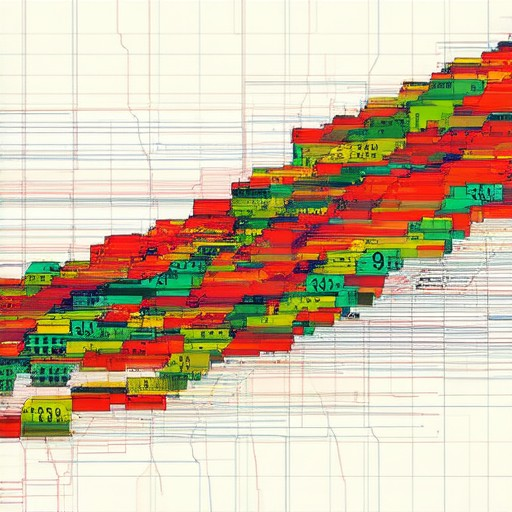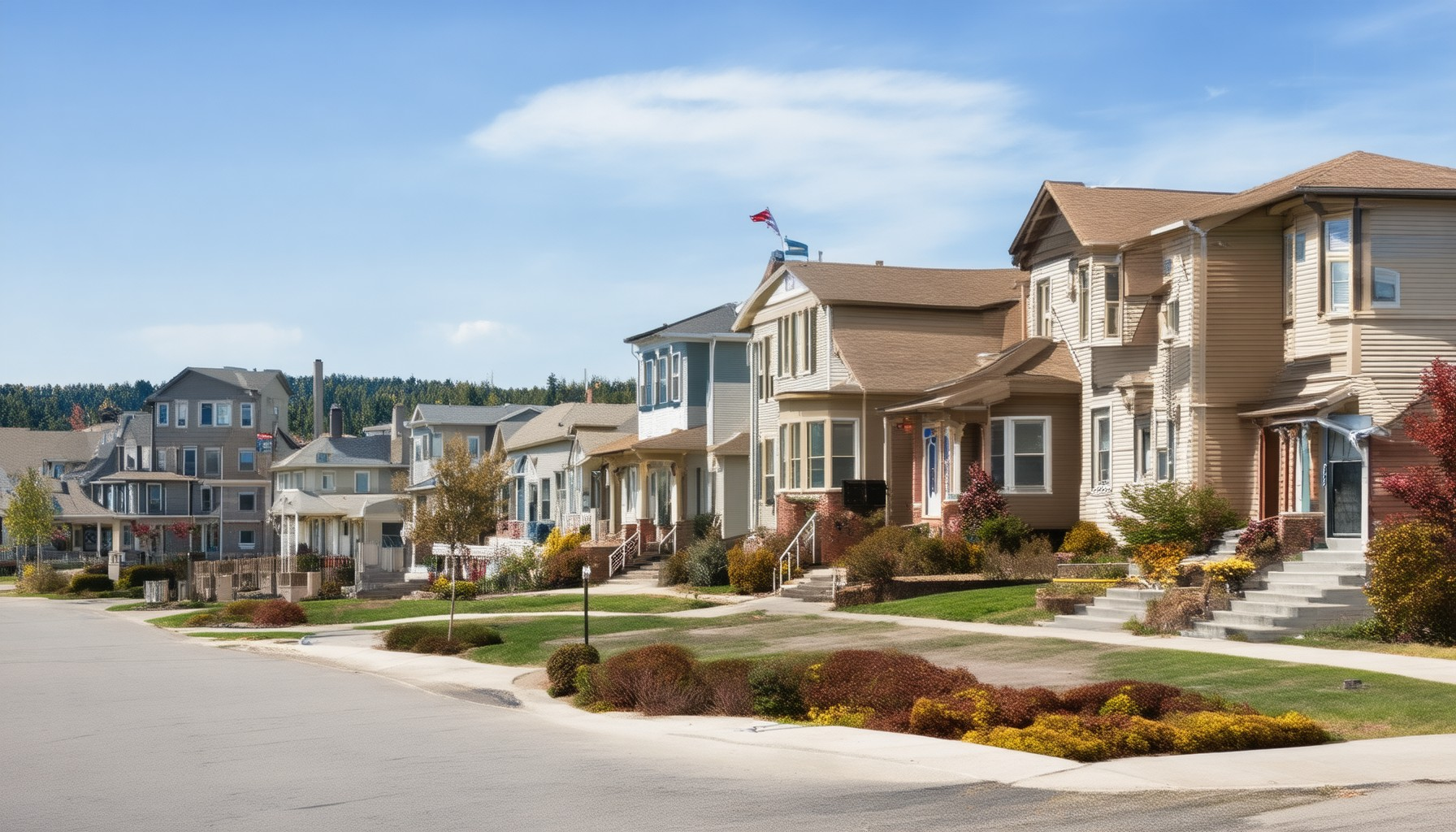Housing prices across the United States exhibit remarkable variation, shaped by a complex interplay of economic conditions, regional demand, and local market dynamics. In this comprehensive analysis, we explore the diverse trends shaping the US housing market, focusing on how prices fluctuate by location. From rising demand in booming metro areas to economic shifts impacting smaller towns, the housing market remains a dynamic and ever-changing landscape. By leveraging data tools and market graphs, we delve into specific regions such as Idaho, Wisconsin, and Kansas to uncover patterns and insights that will help buyers, sellers, and investors make informed decisions. This exploration is essential for anyone considering buying, selling, or investing in real estate, offering valuable insights into where prices are rising, falling, or stabilizing. Join us as we dissect the housing price trends by location, providing a clear roadmap for navigating today’s housing market with confidence.
Key Takeaways
- Rising Housing Prices in Kansas: The state experiences a 6.5% increase in housing prices as of 2025, with variations depending on location.
- Affordable Housing Opportunities: States like Mississippi, Alabama, Oklahoma, Arkansas, and Tennessee offer budget-friendly housing options.
- Housing Shortage in Kansas: The state faces a shortage due to high demand, population growth, and construction challenges, impacting both urban and rural areas.
- Efforts to Alleviate the Shortage: Initiatives include state programs and non-profit partnerships focused on affordable housing development.

Are Idaho Home Prices Dropping?
As of July 2025, Idaho’s housing market continues to evolve with fluctuating home prices influenced by various economic factors. While there has been a slight cooling effect due to higher interest rates and economic uncertainties, home prices in Idaho remain relatively stable compared to previous years.
Current Market Trends
- Home Price Trends : Idaho’s median home price has shown moderate decreases in recent months, reflecting broader national trends. However, this decline is less pronounced than in some other regions.
- Inventory Levels : Housing inventory remains tight in many Idaho cities, which can influence price movements. Low supply often leads to price stability or gradual decreases rather than sharp drops.
Key Factors Influencing Idaho Home Prices
- Interest Rates : Rising mortgage rates have impacted affordability, leading to slower demand and slight price adjustments.
- Economic Conditions : Idaho’s strong economy and growing job market have helped mitigate some downward pressure on prices.
- Construction Activity : Increased construction in some areas is adding to the supply, potentially stabilizing prices in the long term.
Future Outlook
- Predictions : Experts anticipate that Idaho home prices will remain steady or experience mild decreases in the coming months, depending on interest rate fluctuations and economic conditions.
- Advice for Buyers : Shoppers should remain cautious but patient, as opportunities for finding affordable homes still exist, especially in smaller towns or less expensive regions.
For more detailed insights and local market analysis, explore our resources on Idaho housing trends .
Are Wisconsin Home Prices Dropping?
As of the latest market analysis, Wisconsin’s housing market has shown mixed trends in recent months. While some areas may experience slight decreases, overall demand remains strong due to favorable economic conditions and affordable living costs.
According to recent reports, home prices in Wisconsin have seen a modest decline in certain regions, particularly in smaller cities and rural areas. This trend is influenced by a combination of factors including:
- Interest Rates: Rising mortgage rates have slightly cooled demand, leading to price adjustments in some segments.
- Inventory Levels: Reduced housing inventory in some areas has contributed to price fluctuations, though supply remains a concern.
- Economic Growth: Strong local economies in urban centers like Milwaukee and Madison continue to drive demand, offsetting price drops in other areas.
To better understand these trends, consider exploring our Market Trends section, which provides detailed insights and data visualization tools tailored to Wisconsin’s real estate market. Our platform offers comprehensive analysis to help buyers, sellers, and investors make informed decisions.
For those looking to buy or sell in Wisconsin, staying updated on local market dynamics is crucial. Utilize our advanced tools and resources to navigate the current landscape effectively.

Where Are Home Prices Dropping the Most?
According to recent market analysis, home prices are declining significantly in several regions across the United States. These decreases reflect broader economic trends and shifts in the housing market.
Housing Market Trends
The following cities and regions have experienced notable price drops:
- Austin, TX (-3.8%)
- Tampa, FL (-3.6%)
- San Antonio, TX (-2.0%)
- New Orleans, LA (-1.7%)
- Phoenix, AZ (-1.6%)
- Jacksonville, FL (-1.5%)
- Dallas, TX (-1.4%)
- Orlando, FL (-1.4%)
These declines highlight the impact of economic conditions, interest rate fluctuations, and supply-demand imbalances in these areas. Investors and buyers should consider these trends when making decisions about purchasing or renting properties.
For more detailed insights into local housing markets, visit our Real Estate Locations platform. We provide comprehensive data and analysis to help you navigate the current market landscape effectively.

Are House Prices Going Down in Kansas?
As of the latest data, house prices in Kansas have shown a steady increase rather than a decline. In January 2025, statewide prices rose by 6.5% compared to the previous year, indicating a robust housing market. While this reflects a positive trend, it’s important to note that local variations exist, with prices potentially differing by region due to factors like job growth, infrastructure development, and supply-demand dynamics.
The Kansas housing market has been influenced by several key factors, including rising interest rates and increased demand for suburban properties. These elements have contributed to price appreciation, particularly in areas with strong economic growth and accessible amenities. Experts suggest that this upward trend is expected to continue, though potential buyers should remain cautious of market fluctuations.
For those considering purchasing property in Kansas, it’s advisable to consult with local real estate professionals to gain insights into specific neighborhoods and investment opportunities. The state’s diverse economy and growing communities present a compelling case for long-term residential investment.
What is the Cheapest State to Buy a House In?
When considering the cheapest state to purchase a house, several factors come into play, including the cost of living, economic conditions, and regional housing market trends. Based on current data, the following states are often highlighted for their relatively affordable housing options:
- Mississippi : Known for its lower cost of living and access to affordable housing, Mississippi consistently ranks among the cheapest states to buy a home.
- Alabama : With competitive prices and a variety of options, Alabama offers a cost-effective solution for many buyers.
- Oklahoma : The state boasts reasonably priced properties, particularly in smaller towns, making it a favorable option for those seeking affordability.
- Arkansas : Offering a mix of urban and rural areas, Arkansas provides diverse housing opportunities at lower price points compared to many other states.
- Tennessee : Known for its moderate living costs and expanding job market, Tennessee has become increasingly popular for budget-conscious buyers.
These states typically combine lower living expenses with accessible housing, making them attractive destinations for individuals and families looking to enter the housing market. Additionally, some states may offer first-time buyer incentives or grants, further reducing the cost of homeownership.

Is There a Housing Shortage in Kansas?
Yes, Kansas currently faces a housing shortage. According to recent estimates, the demand for housing in the state exceeds the available supply, particularly in rural areas. The Kansas Housing Resources Corporation (KHRC) has reported that rural Kansas alone requires between 3,800 to 4,800 new housing units annually over the next five years to meet the growing demand.
Causes of the Housing Shortage
- Population Growth : Kansas has experienced steady population growth, driven by migration and natural increase, placing strain on existing housing stock.
- Job Market Expansion : The state’s economy has seen growth in sectors like agriculture, healthcare, and technology, attracting more residents.
- Economic Factors : Rising construction costs and limited land availability contribute to the shortage, making new housing developments expensive.
Impact on Different Regions
- Urban Areas : Cities like Wichita and Kansas City face challenges due to high demand and limited inventory.
- Rural Areas : Small towns across Kansas report significant shortages, often struggling to attract developers due to lower densities and infrastructure limitations.
Efforts to Address the Shortage
- State Initiatives : KHRC has launched programs aimed at increasing housing production through tax incentives and grants.
- Non-Profit Partnerships : Local organizations are collaborating with developers to construct affordable housing projects in underserved areas.
Conclusion
The housing shortage in Kansas highlights the need for coordinated efforts among policymakers, developers, and communities to ensure sustainable growth and affordability. For those interested in exploring real estate opportunities, visiting Real Estate Locations can provide valuable insights and resources tailored to Kansas markets.




0 Comments